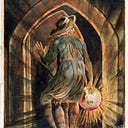“And yet it moves!”
One hundred years separated the lives of Leonardo Da Vinci ( 1452–1519 ) and Galileo Galilei ( 1564–1642 ) and yet they achieved things not achieved since. Leonardo was a man of the Earth while Galileo was a man of the heavens.
Leonardo’s greatest achievements were his paintings of human beings like Jesus and his apostles in the Last Supper and ofcourse Mona Lisa. Galileo’s greatest achievement was his development of the telescope and discoveries regarding the planetary system, specifically Heliocentrism which described the Earth and planets revolving around the Sun which was at the center of the Solar System.
In 1609, Galileo heard about the “Dutch perspective glasses” invented by Hans Lippershey and within days had designed a device of his own — without ever seeing one. He made some improvements — his could magnify objects 20 times — and presented his device to the Venetian Senate. The Senate, in turn, set him up for life as a lecturer at the University of Padua and doubled his salary, according to Stillman Drake in his book “Galileo at Work: His Scientific Biography”.
It was not until the 16th century (1501–1600) that
- a mathematical model of a heliocentric system was presented, by the Renaissance mathematician, astronomer, and Catholic cleric Nicolaus Copernicus, leading to the Copernican Revolution.
- In the following century, Johannes Kepler introduced elliptical orbits, and
- Galileo Galilei presented supporting observations made using a telescope
In 1610 the majority of European astronomers held a complex of views on matters celestial that were an uneasy marriage of
- Aristotelian cosmology,
- Ptolemaic astronomy and
- Christian belief
In that same year Galileo published his Sidereus Nuncius (Starry Messenger), describing observations he made with his new telescope, namely the phases of Venus and the Galilean moons of Jupiter. The Sidereus Nuncius contained three major new discoveries made by Galileo with his telescope:
- The moon was physically like the earth,
- Lighted patches in the night sky, such as the Milky Way, resolved into stars when viewed with the telescope and
- The real sensation that Jupiter had four moons of its own.
With his observations Galileo promoted the heliocentric theory of Nicolaus Copernicus (published in De revolutionibus orbium coelestium in 1543). Galileo’s initial discoveries were met with opposition within the Catholic Church, and in 1616 the Inquisition declared heliocentrism to be formally heretical. Heliocentric books were banned and Galileo was ordered to refrain from holding, teaching or defending heliocentric ideas.
Galileo went on to propose a theory of tides in 1616, and of comets in 1619; he argued that the tides were evidence for the motion of the Earth. In 1632, Galileo published his Dialogue Concerning the Two Chief World Systems, which implicitly defended heliocentrism, and was immensely popular. Responding to mounting controversy over theology, astronomy and philosophy, the Roman Inquisition tried Galileo in 1633, at age 69.
Historically, heliocentrism was opposed to geocentrism, which placed the Earth at the center of the universe. Galileo was eventually condemned by the RomanCatholic Inquisition for his support of heliocentrism as painted here by Joseph-Nicolas Robert-Fleury.
Galileo was found “vehemently suspect of heresy” and sentenced to indefinite imprisonment. He was kept under house arrest until his death in 1642.
Under threat of torture and perhaps death, Galileo recanted, yet he managed to quietly stamp his foot and mutter to the ground, “Eppur si muove.” translated as “And yet it moves . . .” What he meant, of course, was that the facts spoke for themselves. No matter what he (under duress) or the Church might proclaim to the contrary, the truth was the truth: the earth revolved around the sun. He knew it! Galileo was still convicted of heresy, and spent the rest of his life under house arrest.
The English poet John Milton visited him during this time in Galileo’s house at Arcetri near Florence: in Milton’s words,
“There it was that I found and visited the famous Galileo grown old a prisoner to the Inquisition, for thinking in Astronomy otherwise than the Franciscan and Dominican licensers thought.”
On October 31, 1992, with a formal statement at the Pontifical Academy of Sciences, Pope John Paul II rectified one of the Catholic Church’s most infamous wrongs — the persecution of the Italian astronomer and physicist for proving the Earth moves around the Sun. The Pope formally closed a 13-year investigation into the Church’s condemnation of Galileo. The condemnation, which forced the astronomer and physicist to recant his discoveries, led to Galileo’s house arrest for eight years before his death in 1642 at the age of 77.
In a beautiful irony, Galileo’s right middle finger was removed by Anton Francesco Gori on March 12, 1737, 95 years after Galileo’s death. Allegedly Galileo’s finger was stolen by Gori from Galileo’s tomb at Santa Croce, when Galileo’s remains were transferred there on March 12 1737. It passed around for a couple hundred years until it finally came to rest in the Florence History of Science Museum, flipping the bird towards the Vatican for all of eternity.
